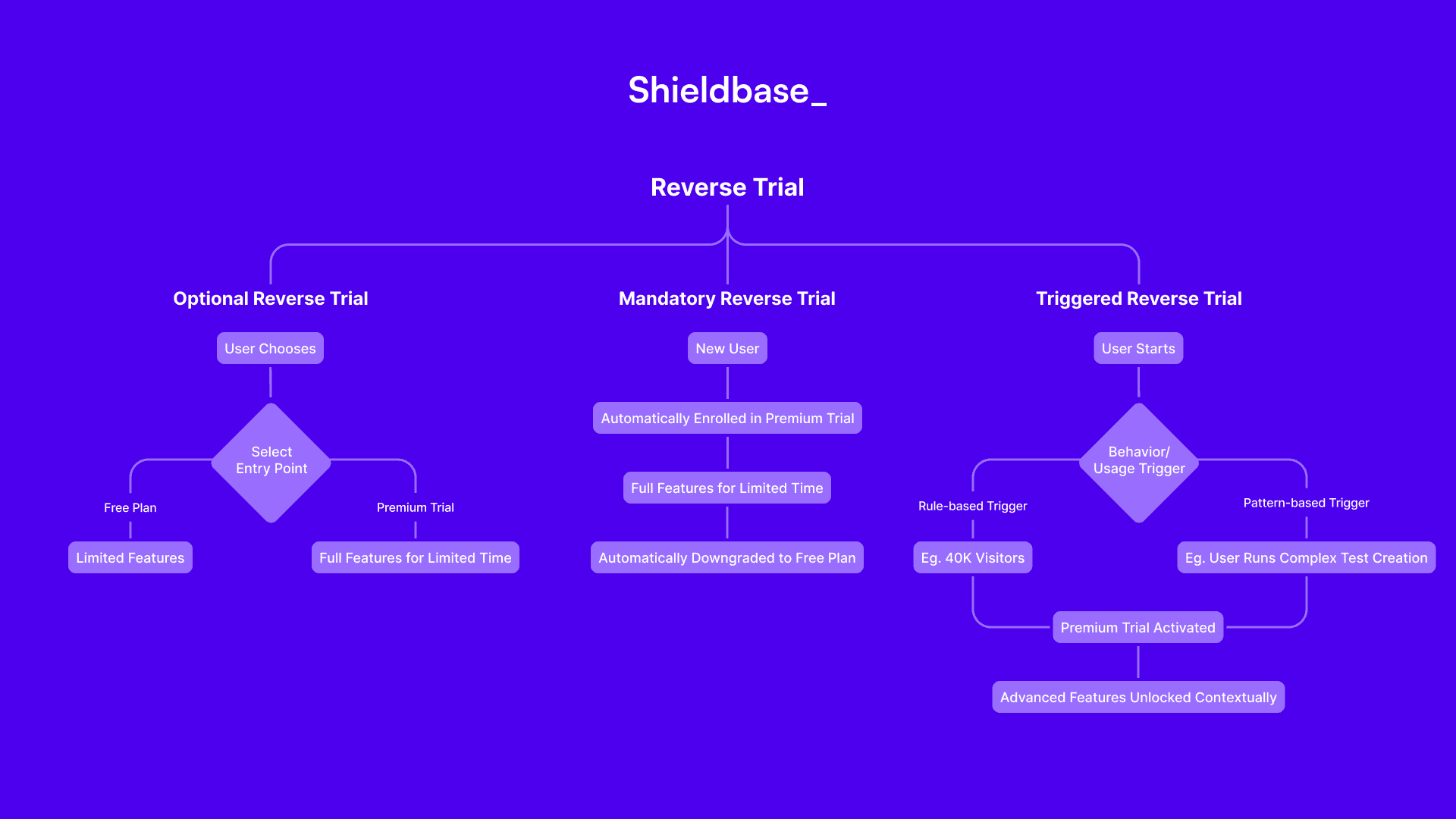Jeffrey Tjendra
Dec 8, 2024
Reverse trial was created by Elena Verna and has now become the standard for product-led growth (PLG) playbook within the product management community.
Basically, a reverse trial is a pricing model that gives users access to a product's paid features for a limited time. After the trial ends, users are downgraded to a free plan with more limited access
The 2 main types of reverse trials are optional and mandatory that are known are:
Optional reverse trial: Users can choose whether to start with a free plan or a trial of the premium tier.
Mandatory reverse trial: Every new user is automatically enrolled in a free trial.
However, there is a third type of reverse trial that is less common and wasn't possible until AI came along - Triggered Reverse Trial.
The Emerging Third Type: Triggered Reverse Trial
Triggered reverse trial activates trial for paid features based on usage-based triggers. The trigger can either be based on rules or anomalies:
Rule-Based Trigger (Quantitative Activation)
Rule-based triggers are predefined conditions that automatically initiate a premium trial when specific, measurable thresholds are met. These triggers create a systematic approach to unlocking advanced features based on quantitative metrics that indicate potential value or growth.
Consider an A/B testing software using a rule-based trigger approach. In this scenario, the trial could be activated when:
The number of website visitors reaches a specific milestone (Eg. 40,000 visitors)
Total test runs exceed a predetermined limit (Eg. 10 concurrent A/B tests)
Data collection volume approaches a critical threshold (Eg. 50,000 data points analyzed)
The rule-based trigger is predictable and scalable across user segments since it's objective and metrics-driven.
Pattern-Based Trigger (Qualitative Activation)
Pattern-based triggers represent a more sophisticated approach to initiating premium trials, which leverages advanced behavioral analytics and machine learning to identify nuanced user engagement signals.
Unlike rule-based triggers that rely on simple quantitative thresholds, pattern-based triggers analyze complex behavioral sequences, user interactions, and contextual usage - then autonomously determine optimal moments for trial activation.
In this scenario with the same A/B testing software, the trial is triggered after the user demonstrates a specific behavior pattern that indicates they're likely to benefit from premium features. For example:
The user creates multiple A/B tests
The user tests variations across different pages
The user shows advanced segmentation needs
The user frequently checks detailed statistical significance of test results
The pattern-based trigger relies heavily on tracking the user behavior at which stage of the journey, then using algorithm to make decisions on which premium features and/or paid plan to enable for the user.
Real-World Examples of Triggered Reverse Trial
Here are how some of known tech companies are applying triggered reverse trial:
Slack triggers premium features when:
Message history limits are approached
Integration complexity increases
Communication volume expands
Calendly activates advanced features upon:
Multiple event type creation
Complex scheduling rule requirements
Team collaboration needs
Mailchimp unlocks premium capabilities when:
Email list size grows significantly
Advanced segmentation becomes necessary
Detailed reporting is repeatedly accessed
The Future
The future of product activation lies not in rigid, one-size-fits-all models, but in adaptive, context-aware experiences that anticipate and address user needs before they even articulate them. It wasn't practical until AI started to mature.
In line with building an AI-first operations, more and more companies will look to change their traditional upgrade paths into intelligent, adaptive experiences that feel intuitively aligned with user needs and product potential.
Make AI work at work
Learn how Shieldbase AI can accelerate AI adoption with your own data.


